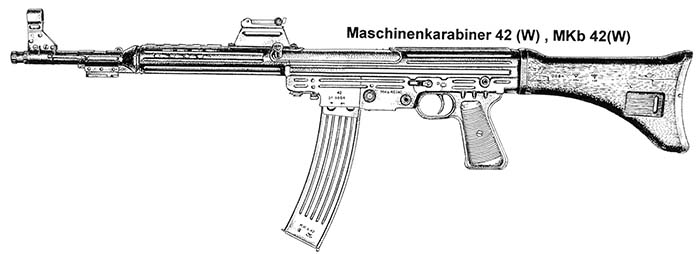By Charles Q. Cutshaw & Lyn Haywood
The firearm that has become known as the assault rifle originated in Nazi Germany during World War Two, a fact that is fairly common knowledge to most students of small arms, given the weapon’s true milestone status. Details of its development history are less well known, however. In this brief article, we will give an overview of the design and development of the earliest assault rifles and describe most of the different variants. The reader who seeks a definitive and detailed history of German assault rifles should purchase The German Assault Rifle 1935-1945, by Peter Senich. (Paladin Press, 1987)
The assault rifle concept had its origins in the First World War, when the German military in typical methodical fashion, studied infantry engagements and came to the conclusion that the vast majority of infantry combat took place at ranges of less than 400 meters. A corollary of this conclusion was that the long-range effectiveness of the standard 7.92x57mm cartridge was generally wasted and the cartridge thus was inefficient under normal combat conditions. After the war ended in defeat for the Central Powers, German ordnance studied several “intermediate” cartridges, but nothing really came of the experiments until the late 1930s. In 1938, the cartridge manufacturer Polte was directed (or undertook as an initiative – history is unclear on this point), to develop an intermediate cartridge for use in an undeveloped family of infantry weapons. The Polte design was accepted in 1941 and designated “7.9 Infanterie Kurz Patrone.” (7.9 Infantry Short Cartridge) The cartridge was similar in many ways to the standard military cartridge, except in terms of overall length. The new cartridge essentially was a shortened 7.92mm cartridge case. The case was made of lacquered steel, with a 125-grain bullet whose jacket was either of copper washed steel or cupro-nickel clad steel. Standard bullets also had a steel core. By the time it was adopted in 1941, the new cartridge was ready for production, but required a weapon. The new cartridge’s ballistics were nominally 2,247 feet per second at the muzzle with energy of 1,408 foot-pounds, compared to the standard 7.9mm “S” cartridge’s 2,880 feet per second velocity and 2,835 foot pounds of energy, respectively.
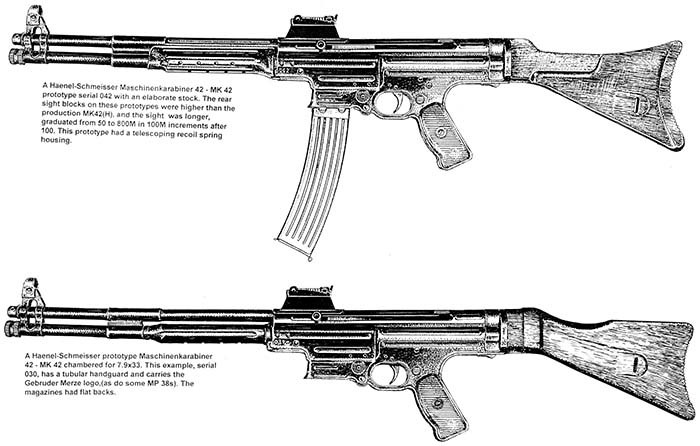
Although the cartridge did not have a weapon at the time of its adoption, the German Waffenamt had not been idle. At almost the same time as development of the 7.9 Kurz Patrone was undertaken, the firm of C.G. Haenel Waffen und Fahrrad Fabrik was contracted to begin development of a weapon for the new cartridge. For those who do not speak German, the Haenel firm’s name indicates that they manufacture weapons and bicycles. At any rate, the Haenel firm’s head of design and development was Hugo Schmeisser, famed as designer of the MP38/40 submachine gun. The new weapon, however, was to be designated mascheinen karabiner (Mkb), which distinguished it from any previous firearm. Prototype weapons chambered for the new Polte cartridge were undergoing testing by 1940. Although Haenel was the official contractor, Walther also undertook an unofficial design in 1940 for an Mkb based on an earlier semiautomatic rifle. Walther submitted a prototype to the Waffenamt, and was also given a development contract in January, 1941. The two firms continued to develop their respective prototypes and by 1942 both had final prototypes ready. Haenel had actually produced about 50 of their Mkb42 weapons by July. It appears that Walther produced approximately 200 of their Mkb42 (W) assault rifles by autumn of that year, but the number cannot be confirmed. The exact history of the Walther design at this juncture is open to speculation. Small Arms of the World claims that some 7,800 of both the Walther and Haenel designs were produced and tested on the Eastern Front, where the Walther design was found wanting. Peter Senich disputes this in his authoritative The German Assault Rifle – 1935-1945, claiming that the Mkb42 (W) was never produced in significant numbers, but in the final analysis the reader will have to decide for himself which is correct. Whatever the case, by November 1942, the Mkb42 (W) had been taken out of production because its annular piston system was considered unsatisfactory.
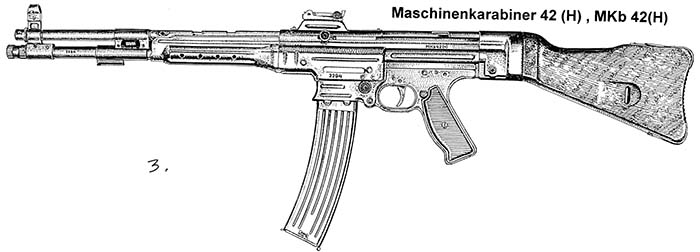
The Mkb42 (W) and its piston system is worth a brief examination before we move on to the Mkb42 (H) and its successors, the MP43/44 and StG 44. Rather than a conventional gas tube, the Mkb42 (W) used a annular piston that encircled the barrel and operated inside a sheet metal sleeve that also formed the front handguard. There were two gas ports in the barrel and the piston acted on a sliding sleeve that operated the bolt, which had two front locking lugs. Without knowledge of the official reasons for the rejection of the Walther design, we can come to a number of reasons for doing so simply by examining the annular piston operating system. First, the system would be subject to stoppages if the outer sheet metal tube were to be dented or bent, as the piston’s travel would be interrupted. Second, since the hot gases from the fired cartridges were in direct contact with the outer tube, it probably got very hot in a very short time, especially when being fired on full auto. Although there is no concrete evidence to support these conclusions, the design of the Walther annular piston system logically leads one directly to them. Needless to say, the Walther Mkb42 (W) design has yet to be duplicated in a gas operated small arm.

The Haenel Mkb42 (H) was similar to its MP43/44 and StG44 successors in overall design, but differed in several ways, which are easily and readily distinguishable, even to the untrained eye. The MP43 which followed the Mkb42 (H) is difficult to distinguish from the MP44/StG44. The primary differences between the Mkb42 (H) and MP43 are as follows:
-The Mkb42 (H) fired from the open bolt, rather than the closed bolt like its successors.
-The Mkb42 (H) gas piston is slightly longer than that of the MP43 and is carried in a separate tube above the barrel, rather than in a tube that is integrated into the handguard, as with the MP43. The gas tube of the Mkb42 (H) is also visibly separate from the barrel and extends almost to the muzzle.
-The Mkb42 (H) has a bayonet lug, while the MP43 does not.
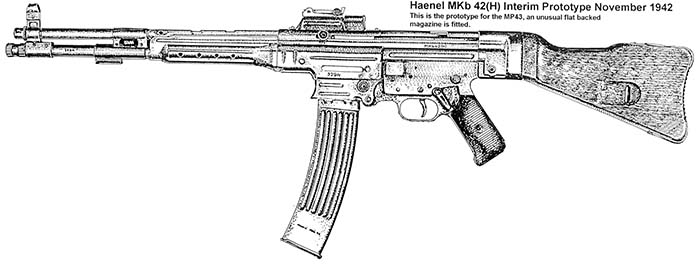
-The Mkb42 (H) has a receiver cut so that the bolt handle can be locked to the rear similarly to that of the MP38/40. This is not a very safe method of locking the bolt, was really only useful on weapons that fire from an open bolt and was replaced by a conventional safety on the closed bolt MP43.
It is at about this point that Adolph Hitler directly influenced the assault rifle development program. He ordered the program to be terminated. The “machine carbine” as it was then called showed so much promise, however, that the Herreswaffenamt covertly continued the program, changing the designation from machine carbine (Mkb) to machine pistol (MP). This suggested to all but those “in the know” that the new weapons were merely improvements on existing submachine guns. Hitler discovered the deception in March 1943 and again ordered the program ended, but allowed a limited production run restricted to those components already in the production “pipeline.” The proponents of the MP43, however, took a liberal view of what constituted components “in the pipeline,” and sufficient numbers of the new weapon were produced to equip a number of units on the Eastern Front, where Soviet “human wave” attacks usually overwhelmed German defenses. The reports from the east were so enthusiastic that Hitler finally gave in and approved production of the new weapon, which was officially designated Maschinenpistole 43 (MP43).
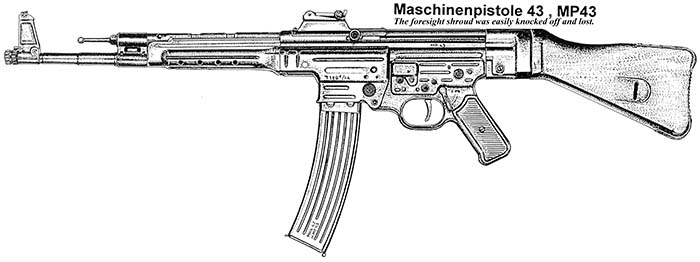
The adoption of the MP43 by the German military was one of the rare turning points in small arms history. The weapon would not be given the name “assault rifle” (Sturmgewehr) until December 1944, but the salient features of this new class of small arm have been retained by every assault rifle design since, including the latest ones. These include:
-Chambered for an “intermediate class” cartridge, in between pistol caliber and full battle rifle classes in terms of exterior ballistics. The MP43 was chambered for the 7.9x33mm cartridge. Virtually all assault rifles are presently chambered for the 7.62x39mm, 5.56x45mm, or 5.45x39mm cartridges, whose ballistics are similar to those of the original. A few Russian assault rifles and carbines, mistakenly called submachine guns in Russian literature, are chambered for a new 9x39mm cartridge. They are still assault rifles or carbines, NOT submachine guns, which by definition fire a pistol caliber cartridge.
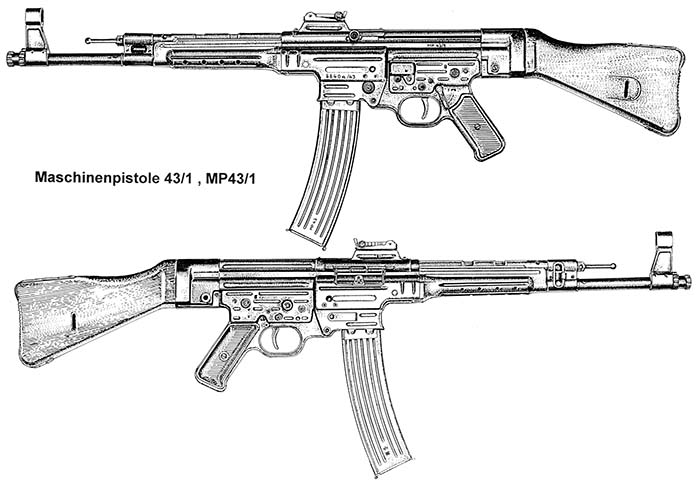
-Select fire capability. Whether semi and fully automatic; semi, full automatic and burst; or semi and burst only, all assault rifles are select fire.
-Detachable box magazine with capacity of over 20 rounds.
-”In line” barrel/stock configuration to reduce muzzle climb when fired in fully automatic mode. This necessitates the use of a pistol grip for the trigger hand.
-Optimum use lightweight or nontraditional materials, such as sheet metal, aluminum extrusions or forgings for metal components and plywood or plastic for furniture.
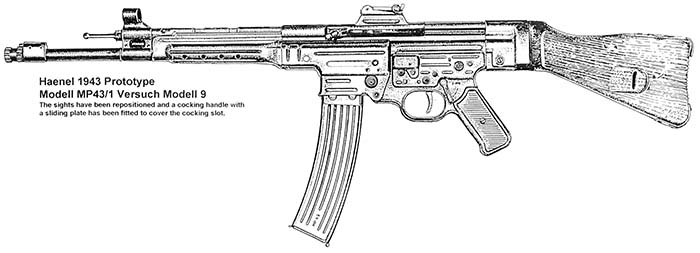
There are two versions of the MP43 – the basic MP43 and the MP43/1. The two rifles differed in the method by which grenades were attached to the muzzle and by the front sights. The original MP43’s front sight was easily damaged or knocked off and lost, so the MP43/1 was fitted with a redesigned front sight of a more robust design. The MP43 used a clamp on type grenade launcher, while the MP43/1 used a screw on type. There is no apparent difference between the MP43/1 and MP44. All MP43/1 and early MP44/StG44 rifles have a “V” type mount for a telescopic sight on the right side of the receiver just below the ejection port. Later StG44 rifle eliminated not only this, but the threaded muzzle, as well in order to reduce costs and expedite production. The designation was officially changed from MP43 to MP44 in April 1944, but rifles bearing the designations “MP43, MP44 and StG44 were manufactured right up to the end of the war.

By late 1944, production of the MP43/44 rifles had increased, despite the Allied bombing campaign. One of the great fallacies of history was the notion that the bombing would both demoralize the German people and reduce industrial output. In fact, the bombing strengthened the resolve of the people and the Nazis were actually able to increase industrial production right up to the end of the war. This included small arms like the MP43/44 and total projected monthly production rates ran from 40,000 to 80,000 weapons through the final months of 1944.
The actual status of the rifle was clarified in December when the nomenclature was officially changed to Sturmgewehr 44. The new designation was most likely chosen to improve morale and give the impression that German scientists had come with yet another new “wonder weapon” in the face of certain defeat. Legend has it that the new designation was personally chosen by Hitler himself. Whatever the reason and regardless of whose mind coined the term, the words “assault rifle” not only distinguished the new weapon as different than submachine guns, but distinguished it as an entirely new class of small arm.
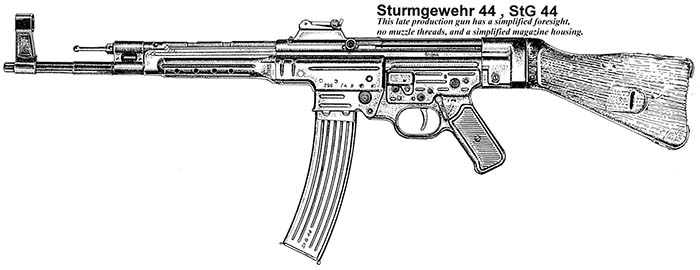
The final page of the German assault rifle story is the StG45 (M). After the success of the MP43, a number of German small arms manufacturers set out to design weapons that were lighter and easier to produce than the Haenel weapon. The only one which achieved any success was a Mauser design that weighed only 8.18lb as opposed to the StG44’s 11.5lb. Early versions of this rifle were designated GeratO6 (H) and functioned by a combination of gas and blowback operation. The final design was designated Stg45 (M) and introduced the roller bearing delayed blowback operating system that has been incorporated into several postwar rifles, including the German G3, Swiss StuG57 and several others. The Stg45 (M) was an innovative design in more ways than its delayed blowback operating system. Its production was “progressive,” with components welded together. The receiver was cylindrical and held a sleeve in which the barrel was assembled, along with ribs that guided the bolt assembly as it reciprocated. The magazine housing was designed to accept standard MP43/44 magazines. The trigger group was assembled separately and attached to the receiver via a hinge and pin similar to that of the MP43/44. It was not removable, but rotated downward clear of the receiver for field stripping and cleaning. Other than the barrel, bolt assembly and a few minor components, the StG45 (M) was made entirely of stamped steel. While not a true milestone weapon in the sense of the MP43/44, the StG45 (M) had a decided influence on modern small design that continues to this day in firearms such as the Heckler & Koch HK33 and 53 rifles, the MP5 submachine gun, and the Spanish CETME, in addition to those already mentioned.

In the final analysis, the German assault rifles of World War II constituted one of the rarest events in firearms history – a single design that defined an entirely new class of small arm. While Kalashnikov assault rifles may have been more widely distributed, that is because the Soviet government virtually gave them to client states. And while the AK was itself a significant design, it was basically no different in concept than the MP43/44/StG44 that preceded it. Kalashnikov claims that the MP43/44/StG44 did not influence his design, but given the configuration of the AK, this is doubtful. The German design also influenced many other small arms designers who used its basic configuration as the starting point for their own designs. From Eugene Stoner to the weapons designers of today, the basic assault rifle configuration and cartridge class established some 55 years ago by Haenel continues and shows few signs of fading into history. Despite claimed “revolutionary” small arms such as the American OICW and French PAPOP, these weapons will never have an influence on firearms design approaching that of the German assault rifles. They are simply too expensive, too complicated and too bulky to ever replace the assault rifle as a class of weapon. The MP43/44/StG44 will thus continue to influence small arms design for many years to come.
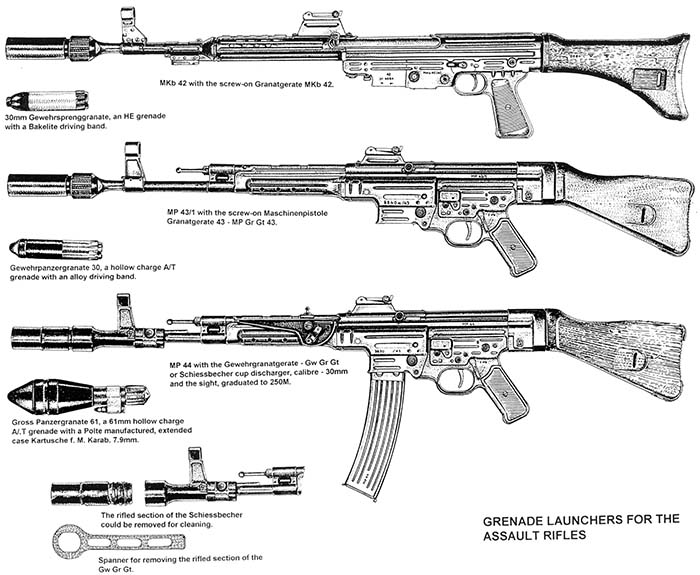
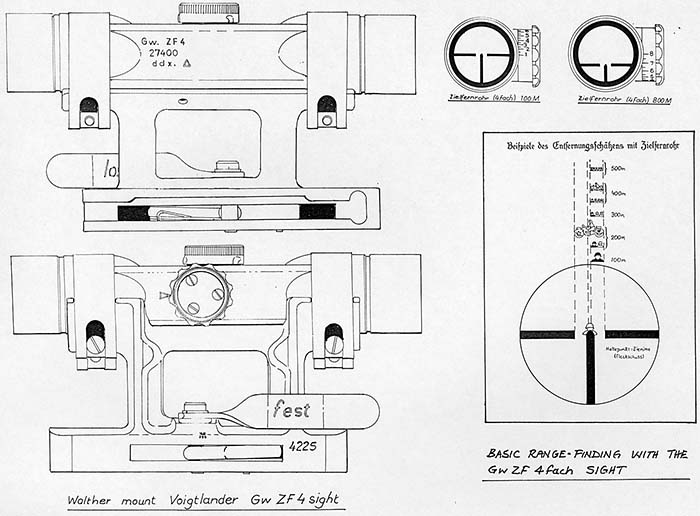
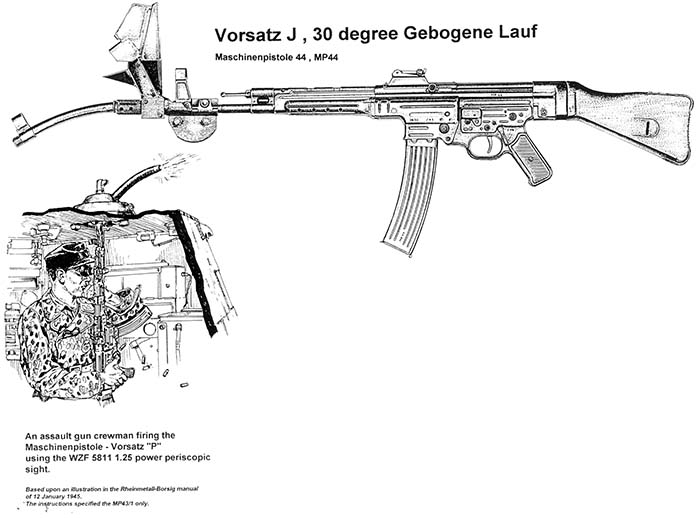
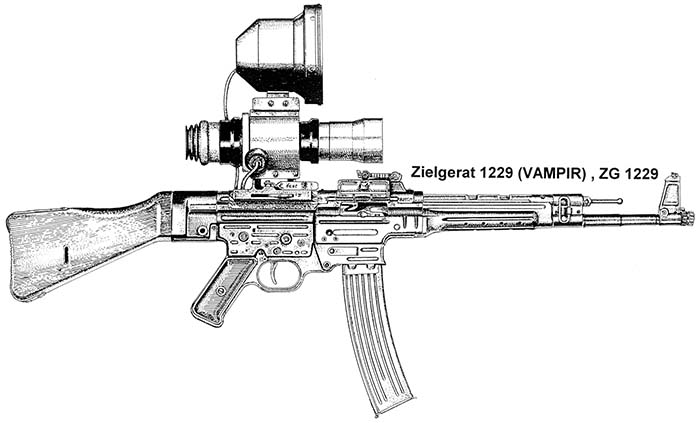
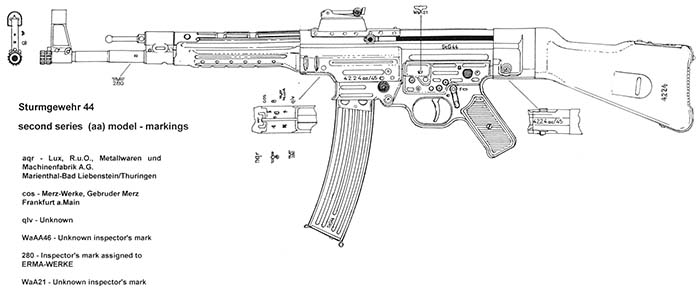

| This article first appeared in Small Arms Review V3N5 (February 2000) |



